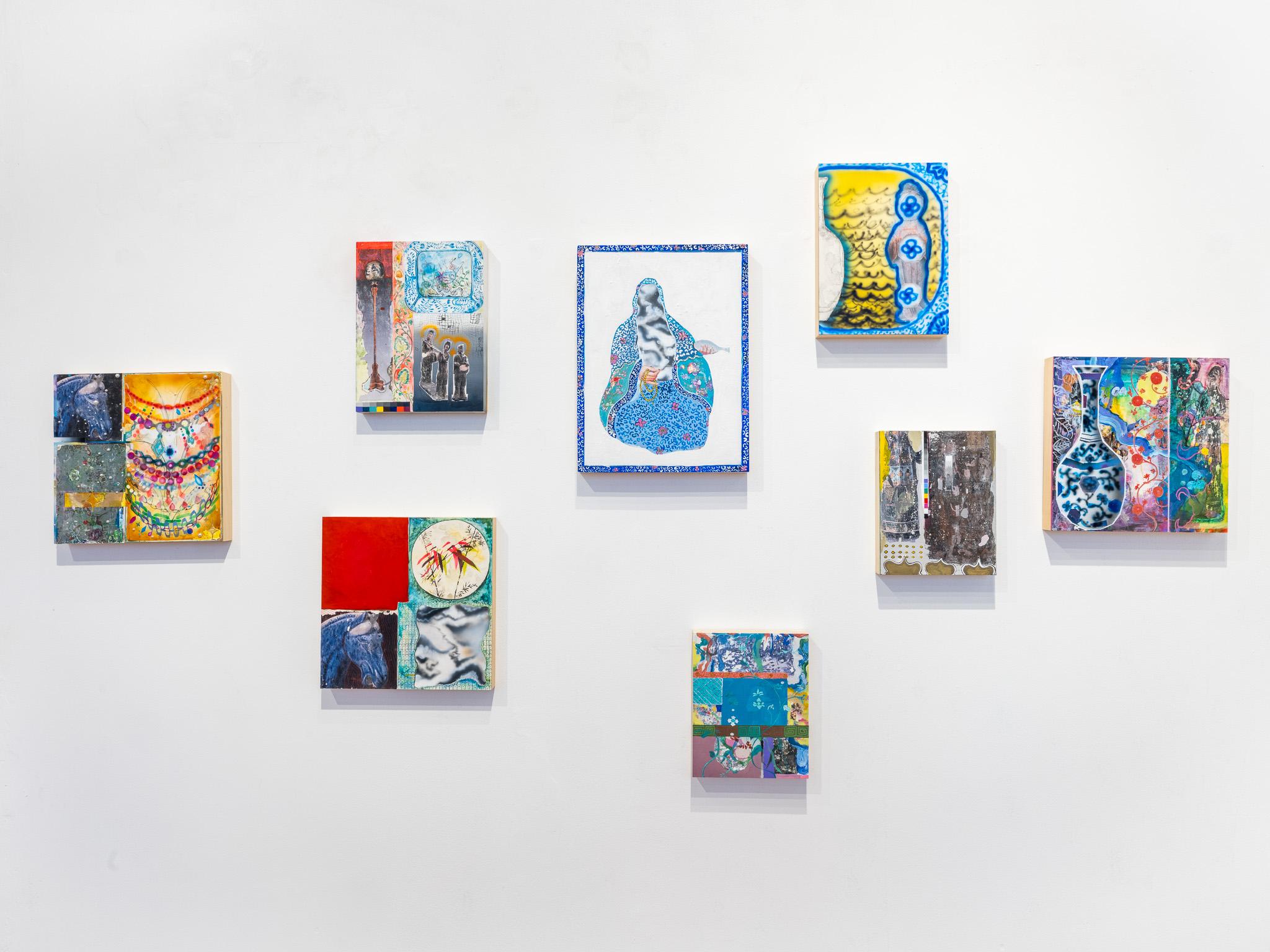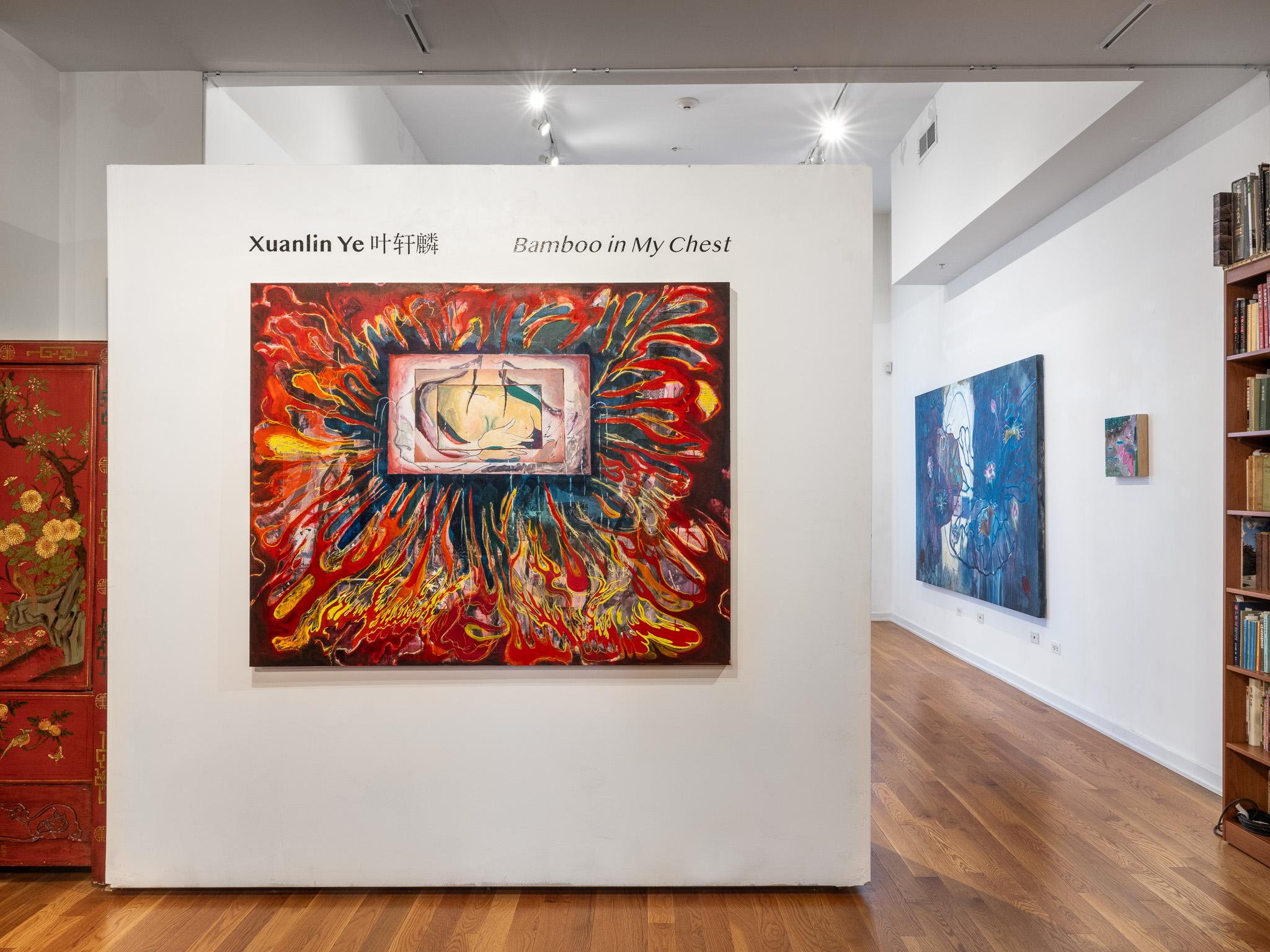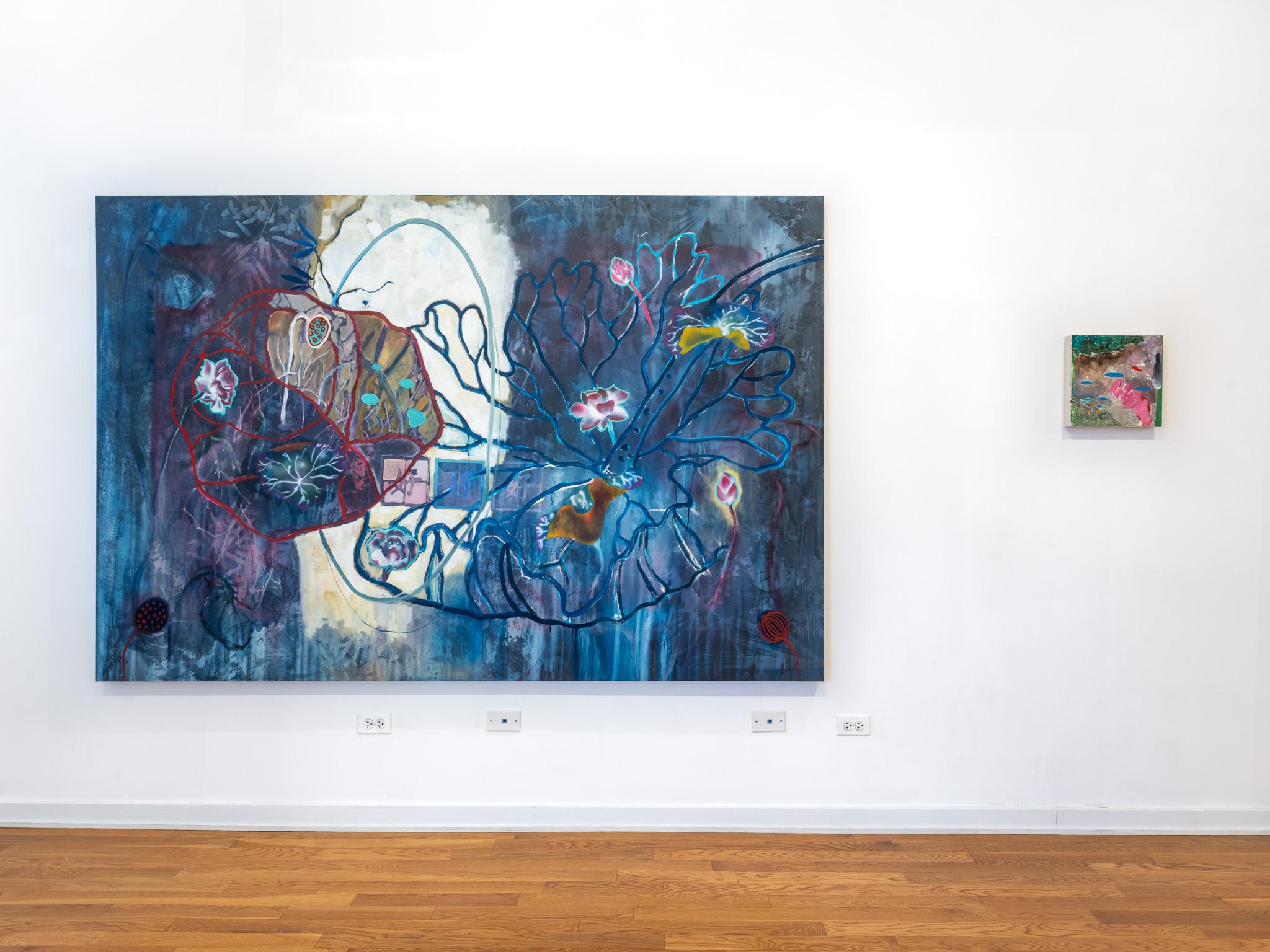For Xuanlin Ye, the slow, embodied labor of painting is a meditative act that challenges perception, opening a crucial space to confront tangled legacies of dislocation, belonging, bloodline and motherhood. How can Xuanlin Ye’s solo exhibition at the Chinese American Museum of Chicago (CAMOC) starting from April 28, 2024, titled Bamboo in my chest, offer a potent, painted answer. The exhibition interrogates how an artist actively redefines a cultural heritage, using contemporary language to prove its urgent relevance beyond the constraints of classical expectation. Within the exhibition, Ye uses obscured film stills, images from mystic tales, artifacts, and tomb figurines as the undertone for his work. He then uses his brush strokes playfully to suggest a new layer of viewing relationships between the photo-transferred images and other painted imagery within the picture frame.. Ye wields his painting practice as a method to interrogate the importance and relevance of this history for the diasporic artist today.
This creative tension is palpable from the moment a visitor steps into the exhibition. Passing through the museum’s historical collection. The first painting on the outer wall of the exhibition hall, The Feeding of the Deer Goddess, immediately establishes the show’s central conflict. This bright red painting, depicting animate fire pushing towards a central female figure is a direct reference to a story illustrated in the Dunhuang Caves along the Silk Road. A central, triptych-like depicts a female figure holding her breast as a fantastical rain of water or milk pours down, while the outer ring of fire aggressively presses inward. Walking close, one discerns a hidden underlayer: phototransferred images of porcelain, a woman’s eye, and decorative patterns, all peeking through the vigorous painterly marks. These submerged fragments are not random; they are visceral. The porcelain and patterns evoke a deep cultural lineage, while the woman’s eye grounds this heritage in something intimate and bodily—an echo of the motherly flesh suggested by the goddess. It is this very artistic intervention—the act of painting over, through, and with these images—that activates them. The painting thus introduces the show’s core argument: the weight of an Asian past is less a burden to be discarded, but a kinetic, generative source for a diasporic present.
This strategy of layering history and process deepens in Study in Blue, Water Lily. Ye builds the painting’s background using a cyanotype—a photographic process—to print myriad shadows of plants, instantly merging the historical (botanical studies, ink wash) with the contemporary (photochemistry). He then writes three Chinese characters, “好好好” (Hǎohǎohǎo), or “Fine, Fine, Fine,” on the surface, signifying a kind of resigned compromise. Over this multi-layered base, the artist employs an airbrush to apply vibrant lotus flowers, their synthetic, almost electric, color popping against the deep chemical blue. He then adds another layer of oil paint, depicting both abstract and descriptive lotus forms, creating a dense field of information.

A commanding circular form then interrupts this entire layered history. This gesture disrupts the established interplay of time and space, establishing a new, absolute focal point. This forceful imposition of a pure gestural structure – the circle – onto the densely decorated surface becomes the foundation for redefining the painting’s meaning. It is an act that recontextualizes all the culturally significant motifs beneath it. Perhaps this primary, painter – claiming the authority to both use and simultaneously question the historical-visual syntaxes he inherits.
Ye approaches painting as a critical tool to examine the synthesis of image origin, cultural memory, and modern aesthetic choices. For instance,In the painting Blue Horse, Ye utilizes photo-transfer to incorporate a digitally generated, pixelated screenshot of a fleeting scene from the bamboo forest sequence in the movie Crouching Tiger, Hidden Dragon. This Chinese wuxia film, which debuted in the West around 2000, arguably became a core, often reductive, image of contemporary China for Western audiences. On the left, Ye includes a photo-transfer of a close-up picture of an equestrian statue from the Nelson-Atkins Museum of Art. Additionally, the bottom left features a small, traditional watercolor horse, depicting the entire body. Crucially, to render the bamboo strokes, he employed a stencil cut from a Chinese painting manual, then airbrushed the ‘perfectly painted’ traditional form. This technique is the essence of Ye’s project: breaking the history into a mechanical tool (the stencil) to be re-articulated using a modern medium (airbrush), thereby challenging the expected reverence for the ink master’s hand.

Ye wields a visually dense, even chaotic, language to pose a fundamental question, one clearly informed by his deep study of Asian art history (having received his MA in the subject at the University of Chicago): how does an artist forge a personal visual language from this inherited weight? It is clear the artist deliberately thrusts these images—drawn from tomb figurines, cave murals, and mystic tales—into the foreground, forcing a powerful collision. They clash not only with each other but with the artifacts housed in this history-rich museum and, most importantly, with the artist’s own painterly marks. This forceful, unresolved combination is the very struggle Ye demonstrates: a cyclical, high-stakes effort to break, to question, and finally, to re-embrace these resonant historical images on his own terms.

About The Artist:
Xuanlin Ye, an renowed Chicago-based artist, educator, holds a BFA from the School of the Art Institute of Chicago (2017), an MFA from Hoffberger School of Painting at Maryland Institute College of Art (2020), and an MA in Art History from the University of Chicago (2022), where he completed his thesis with art historian Wu Hung. He is adjunct professor of art at Roosevelt university. He is honored with the Hoffberger Fellowship, Soho Fellowship, and the Longform Award from Ox-Bow School of Art. His work has been showcased worldwide, including exhibitions in New York City, Baltimore, Chicago, San Diego, Dallas, and Seoul (Korea). Featured in publications like New American Painting and the Wenzhou Daily Newspaper (China), Ye’s art has been displayed in institutions such as the Chinese American Museum of Chicago, Ox-Bow School of Art, Roots and Culture , University of Chicago, and Czong Institute for Contemporary Art (CICA) in Korea and Valencia College Orlando. Through exhibitions in American cities, His art explores the tension between personal identity and cultural history, transforming intangible concepts into tangible visual forms.

